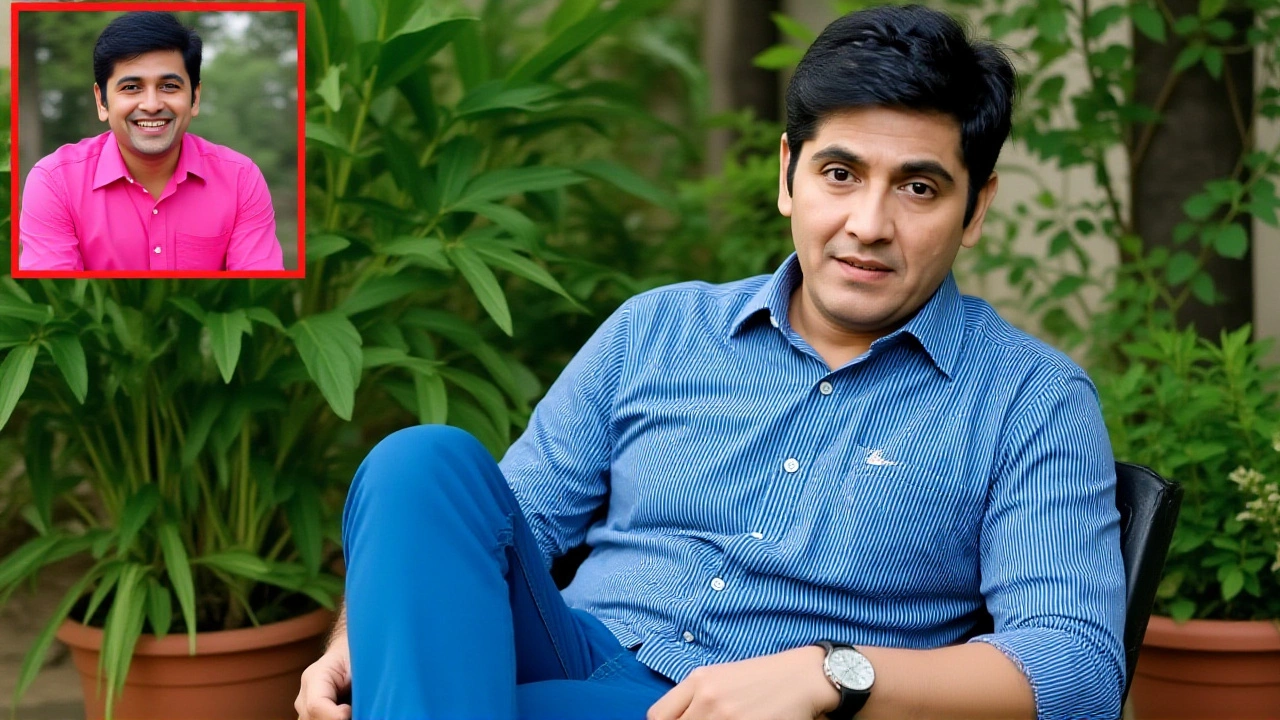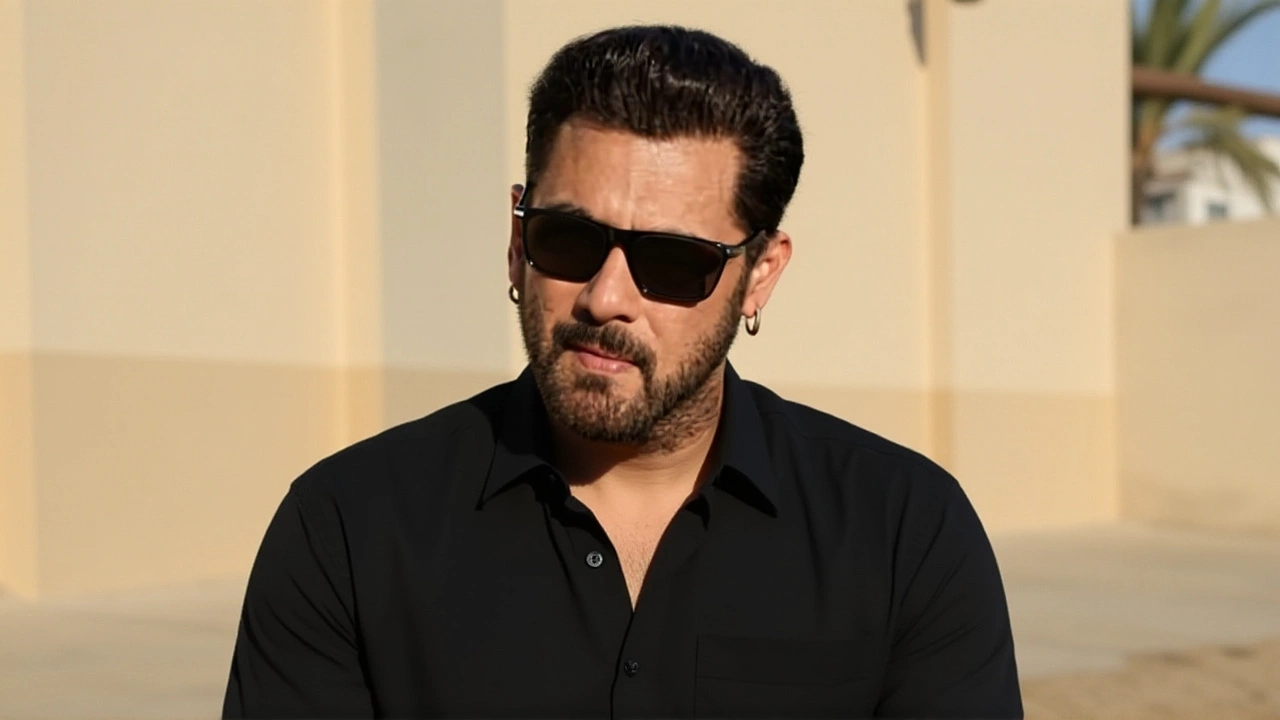Actor Aasif Sheikh, known for the sitcom Bhabhi Ji Ghar Par Hain, revealed that Bollywood megastar Salman Khan, actor repeatedly put the law on the back seat during late‑1990s shoots, racing cars on paved roads and even footpaths.
The most vivid memory he shared came from the 1998 production of Bandhan, when Khan was behind the wheel of a Maruti Esteem. The duo—Khan in the driver’s seat, Sheikh as passenger—took a detour that led straight onto a busy footpath in Mumbai. When Sheikh warned, “Salman, pakde jayenge,” the star laughed, “Pakde jayenge toh yaar, Salman Khan hain, ghabrao mat.”
That confidence crashed when a traffic officer, completely oblivious to the celebrity’s face, flagged them down. The cop’s lack of recognition sparked a comic exchange that still makes Sheikh chuckle: he suggested the star strip his shirt—an all‑too‑familiar nod to Khan’s shirtless action‑hero image—to aid identification.
Backdrop: Bollywood’s “Fun‑loving” Culture in the 90s
The 1990s were a wild decade for Hindi cinema. Box‑office megastars often blurred the line between on‑screen bravado and off‑screen behaviour. As film sets turned into giant playgrounds, the lack of strict safety protocols meant directors and actors sometimes indulged in reckless stunts without professional supervision.
Industry insiders recall that many actors, including Shah Rukh Khan and Ajay Devgn, would hop behind car wheels for a quick thrill between takes. This “do‑it‑yourself” approach, while entertaining on set, often invited police attention.
Reckless Ride on the Bandhan Set
According to Sheikh, the episode began when Khan asked him to sit beside him, promising an “interesting route.” The actor then accelerated through a narrow lane, hopping onto a pedestrian walkway that bordered a bustling market. By the time the police cruiser appeared, the two were already weaving past street vendors, narrowly missing a fruit stall.
The officer, later identified by Sheikh as part of the Mumbai Police, rolled down his window and asked for documents. Khan, expecting instant deference, fumbled for his licence, only to be met with a puzzled stare. The cop reportedly said, “I don’t recognize you, bhai,” prompting the now‑familiar banter about shirt removal.
Sheikh’s recounting of the moment includes the clatter of the car’s old engine, the smell of exhaust mixing with street‑food spices, and the sudden hush that fell when the police officer finally let them go with a warning. “He let us off with a smile,” Sheikh laughs. “He realized I was just a junior actor, not a big star.”
Another Wild Turn on the Auzaar Shoot in Hyderabad
Sheikh also recollects a 1997 escapade while filming Auzaar. A friend of his had just bought a brand‑new car, which Khan insisted on driving across the hilly outskirts of Hyderabad. The star’s “just having fun” mantra turned the mountain road into a roller‑coaster, with the vehicle skidding over river‑crossing bridges and rocky bends.
“It felt like we were in a video game,” Sheikh admits. “The car’s suspension was screaming, but Khan kept grinning, revving the engine as if he were starring in his own action sequence.” The friend, terrified for both his vehicle and his life, remained silent—knowing that a complaint could jeopardise his budding relationship with a celebrity.
After the daring ride, Khan reportedly stopped, patted the passenger seat, and said, “Don’t worry, I’m just testing the limits. It’s all part of the fun.” The anecdote underscores how Khan’s confidence in his stature often overrode practical caution.
Reactions from the Industry and Legal Lens
The revelations come amid a long‑running public debate about Khan’s road‑safety record. In 2002, he faced a tragic hit‑and‑run case that claimed one life and injuring three others; the court acquitted him in 2015 citing insufficient evidence. Critics argue that the 1990s incidents, while seemingly harmless, foreshadowed a pattern of reckless behaviour that later resulted in far more serious consequences.
Film‑industry veterans, speaking to The Lallantop, have mixed feelings. Some describe Khan as “a kid at heart, always seeking an adrenaline rush,” while others warn that his “celebrity shield” can encourage dangerous conduct among younger actors eager to emulate him.
Legal analysts note that Indian traffic law does not grant any immunity based on fame. “If a star is caught breaking the law, the police are obligated to act,” says senior advocate Ramesh Singh. “The fact that an officer didn’t recognise Khan back then is an anecdote; it does not change the legal responsibilities.”
What This Means for Celebrity Accountability
Sheikh’s stories serve as a reminder that fame can create a false sense of invincibility. While the footpath episode ended in a chuckle, it illustrates how easily a reckless act could have escalated—especially in densely populated Indian streets where a misplaced vehicle can endanger pedestrians.
For the film fraternity, the anecdotes are prompting informal safety briefings on set. Production houses now hire professional stunt coordinators for high‑speed sequences, a practice that was rare in the 1990s. Moreover, the industry is seeing a gradual shift toward stricter compliance with local traffic regulations, driven in part by the public’s growing intolerance for celebrity misbehaviour.
Ultimately, the tales highlight a broader cultural conversation: should the spotlight come with a mandatory responsibility to model lawful conduct? As Bollywood’s influence stretches beyond India’s borders, the answer may shape how stars navigate their off‑screen lives for years to come.
- Key Fact 1: The footpath incident occurred on a Bandhan set in Mumbai in 1998.
- Key Fact 2: Khan was driving a Maruti Esteem, a popular compact sedan of the era.
- Key Fact 3: A separate reckless‑driving episode happened during Auzaar filming in Hyderabad, 1997.
- Key Fact 4: The Mumbai police officer did not recognize Khan, leading to a humorous exchange.
- Key Fact 5: Salman Khan’s later 2002 hit‑and‑run case resulted in an acquittal in 2015, keeping the debate over his road‑safety record alive.

Frequently Asked Questions
How did the traffic police officer fail to recognize Salman Khan?
According to Aasif Sheikh, the officer was on routine patrol and had never seen Khan off‑screen. The star’s fame was largely tied to his film persona, not everyday street sightings, so the cop genuinely asked for identification.
What safety changes have Bollywood productions adopted since the 1990s?
Most major studios now employ professional stunt coordinators and require permits for any vehicular sequences. Insurance policies have also become stricter, forcing producers to document risk‑assessment procedures before filming high‑speed scenes.
Did the 1998 Bandhan incident have any legal repercussions?
No formal charges were filed. The officer issued only a warning, and the matter was treated as a minor traffic violation. However, the anecdote resurfaced after Khan’s 2002 hit‑and‑run case, fueling public debate about celebrity impunity.
Why does Aasif Sheikh still maintain a friendship with Salman Khan?
Sheikh says Khan’s genuine, playful nature outweighs past mishaps. Their bond, formed in the early 1990s, survived many film projects and occasional run‑ins with the law, and they continue to support each other’s careers.
What impact could these stories have on public perception of celebrity drivers?
The revelations reinforce the idea that fame does not exempt anyone from traffic laws. As media coverage keeps such incidents in the spotlight, audiences may demand stricter enforcement and more accountability from high‑profile individuals.
